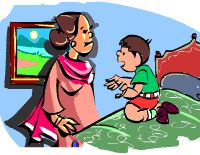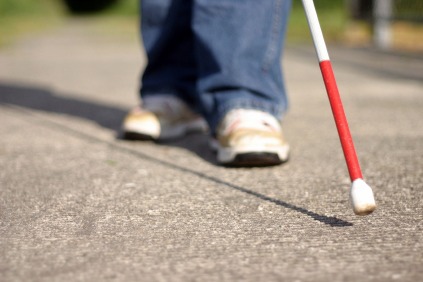
Speech Problems in Children [Illustration by Shiju George]
I can hear
I can walk
Why do all my problems surface
When I try to talk?
Speech problems can be frustrating indeed. Unclear (dyslalic) or dysfluent (stammered) speech can interfere with the development of healthy personality in an otherwise normally intelligent child and cause him tremendous hardship as he grows up in the competitive arena that is today’s world. A defect in speech is a major handicap in day-to-day interaction in social and career situations.
Although some speech disorders are caused by physical abnormalities in the organs of speech and/or hearing, a majority of speech difficulties are the result of incorrect learning or psychological problems especially between the ages 3 to 6 years when the child’s speech habits are being formed.
The case of a seven-year-old boy
Rohan, a seven-year-old intelligent boy was referred to our speech clinic by his teacher because he could not speak clearly and it was difficult to understand what he was saying. He could not pronounce the /k/, /kh/, /g/ and /gh/ sounds correctly. For instance, when he wanted to ask his teacher: “Can I go with Gokul?”, it sounded like : “Tan I do with Dotul?”.
The other children in his class found Rohan’s speech extremely funny and he soon became the focus of their ridicule. A sensitive child, Rohan soon began to hate school and often came back home in tears. His unclear speech was obstructing him from growing up as a happy and exuberant child and making him into a sullen and grumpy little boy who did not like to play with other children. He tried to avoid any social contact because it invariably involved talking which he was apprehensive about.
On examination, it was found that there was nothing abnormal with any of his speech organs. His tongue was capable of adequate movements. He was a case of simple dyslalia which meant that he would have to be helped to unlearn his wrong articulatory movements when he said (or rather tried to say) words containing the four problematic sounds /k/, /kh/, /g/ and /gh/.
Within a week, speech therapy with Rohan began to produce positive results and his parents were thrilled! The child was taught to first produce the /k/ sound correctly in isolation. Gradually he practiced getting it right with words which had the /k/ sound in initial ( e.g. Cat), medial (e.g. Donkey) and then final (e.g. Take) positions. Then he worked towards saying it right in sentences. The entire therapy lasted for 15 days and Rohan soon began to return to being the normal youngster he actually always was!
Stammering is another speech problem which is commonly encountered by speech therapists. Many young children (and adults who had started stammering as children) cannot speak fluently and tend to repeat (or hesitate on) certain sounds. For example such a child would say :
“Mu..Mu..Mumm..Mummm..Mummy, I www..wa..want a sssssss..cycle”. Stammering is predominantly a male problem. Over 80% of all stammerers are male. Female children appear to possess better neuro-muscular control over their speech and thought mechanisms. Stammering in early childhood is a fluctuating condition which appears and disappears in phases.
Stammering is indeed a baffling condition and treatment for relief from this speech problem is never an instant or (as in Rohan’s case) a two-week affair. This is because the roots of this problem are strongly linked with the child’s environment and family. In over 65% of the cases it has been observed that some one else in the family (usually father or uncle) also suffers from stammering. Stammering usually affects the eldest male child.
It increases when the child gets excited or angry or afraid. Like with all of us, his speech too is inextricably linked with his emotional status. In moments of stress, the stammering child or adult tends to lose control over his neuro-muscular system. If this occurs frequently enough, the child begins to be afraid to speak and learns to avoid speaking.
It is important for parents to take corrective measures early enough to prevent this stammered style of speaking from taking strong roots in the child’s mind. Society has always reacted almost cruelly with children and adults who stammer. It has laughed at them! People usually find stammered speech extremely funny. But for the sufferer and his parents, stammering is a debilitating handicap indeed. So next time the comedian in the Hindi film stammers in search of cheap laughs, think of the millions of stammerers in our country.
Yes! There are an estimated 85 million stammerers in India.Every one knows of at least one person who stammers. Added up, the numbers are staggering. Treatment for stammering in children involves modifying speaking habits and helping the child develop a controlled manner of talking.
Speech therapy also involves trying to understand the fears and frustrations of an older child who might have faced prolonged negative social reactions, sometimes for years. Competent speech therapy on a regular basis invariably begins to help even the severe stammerer who learns new speaking techniques and then practices them regularly.
The tremendous joy of being able to speak normally is a goal worth working towards. Speech is one of our body’s strongest habits. Abnormal speaking styles like dyslalia or stammering, if left untreated, can soon become that person’s habit. These incorrect habits can be modified through speech therapy.
Successful leadership almost always means a superior ability in communicating with friends and colleagues. This ability can be acquired and for the benefits it entails, it doesn’t really demand unreasonable efforts.










